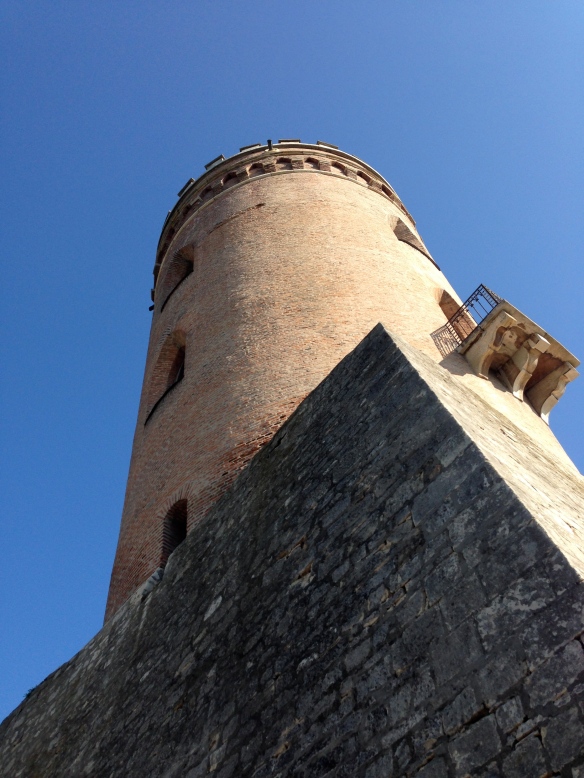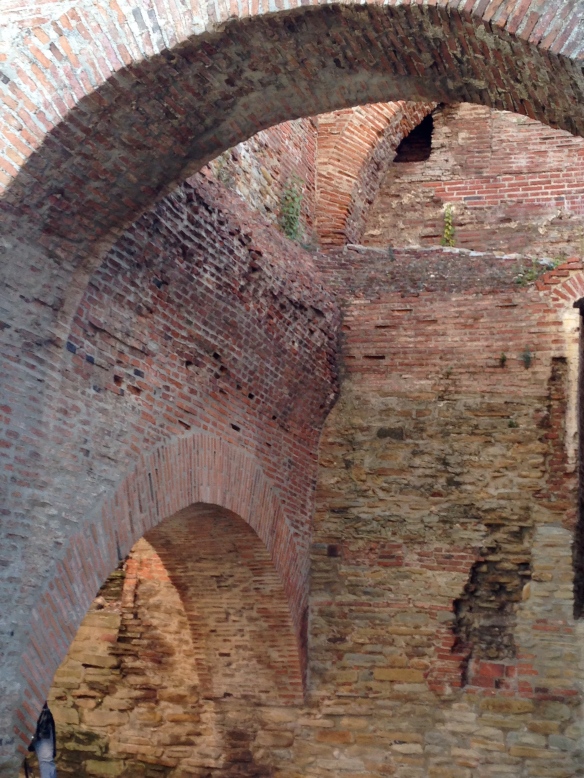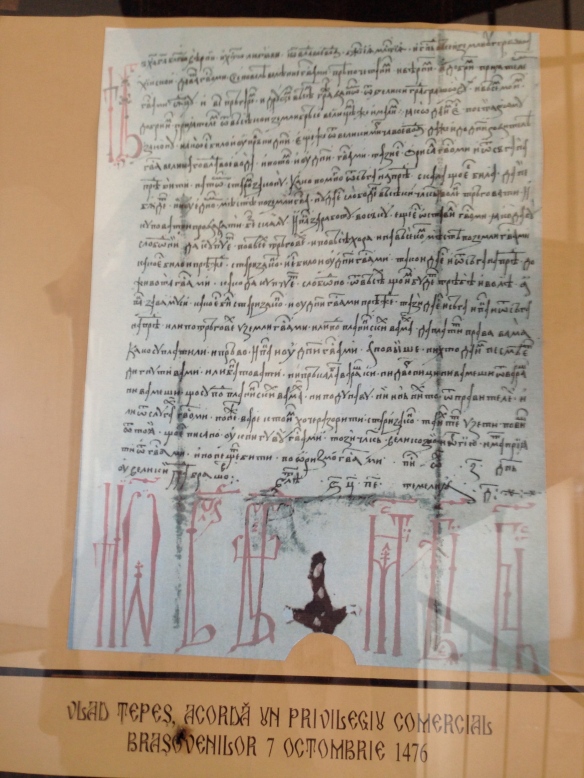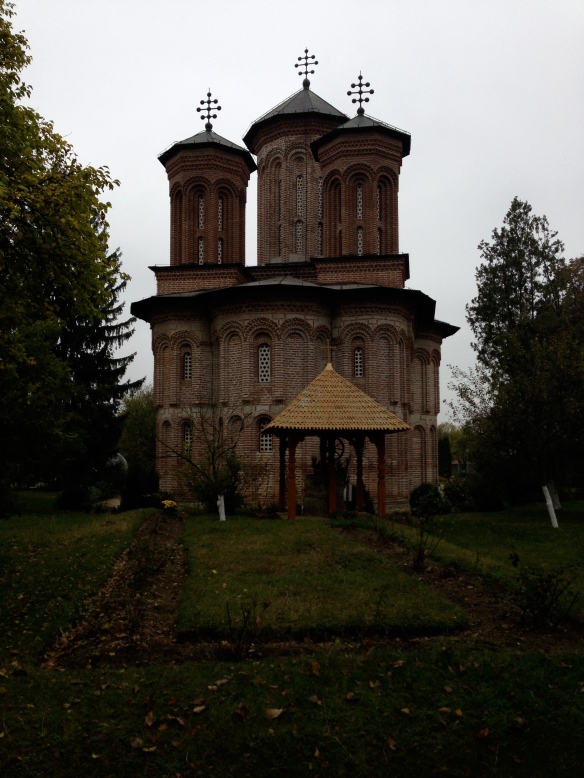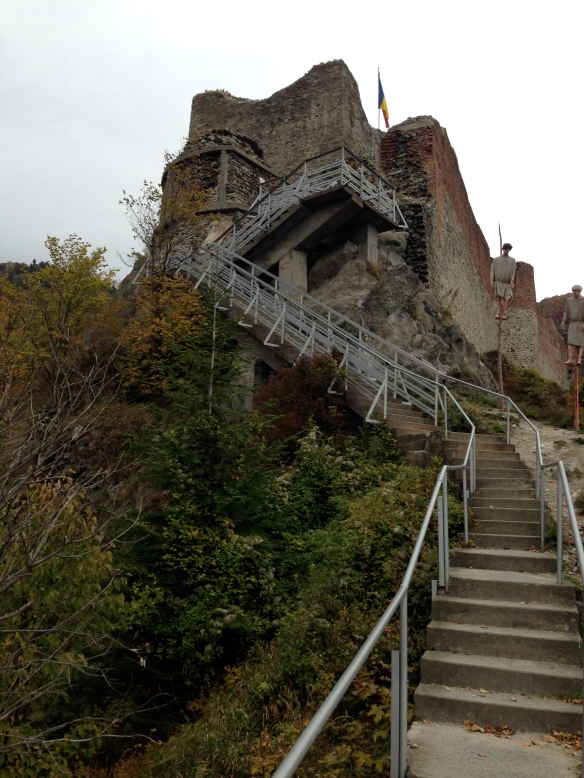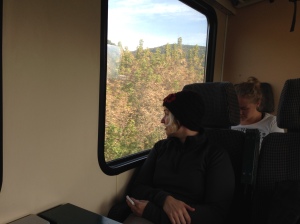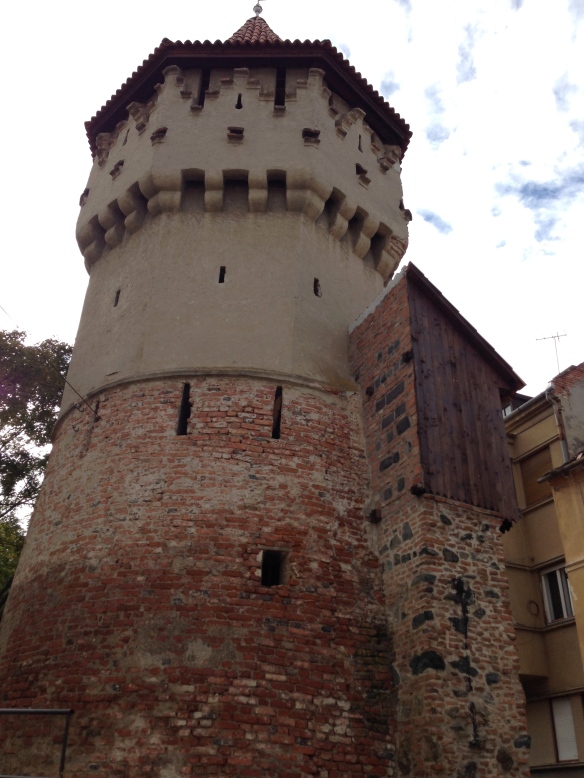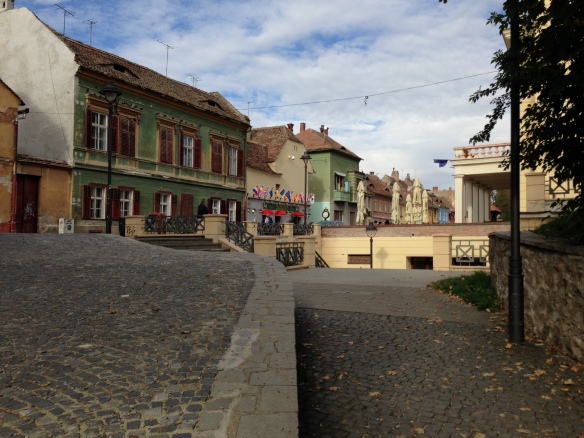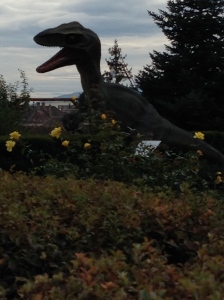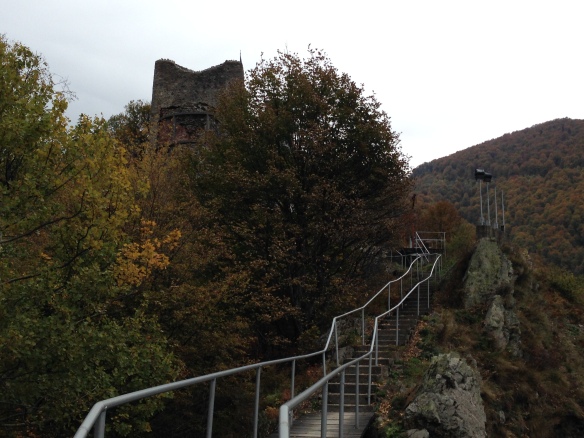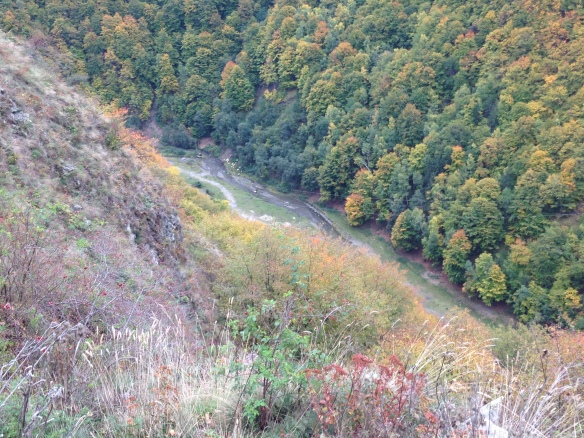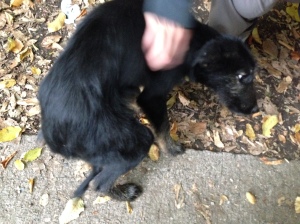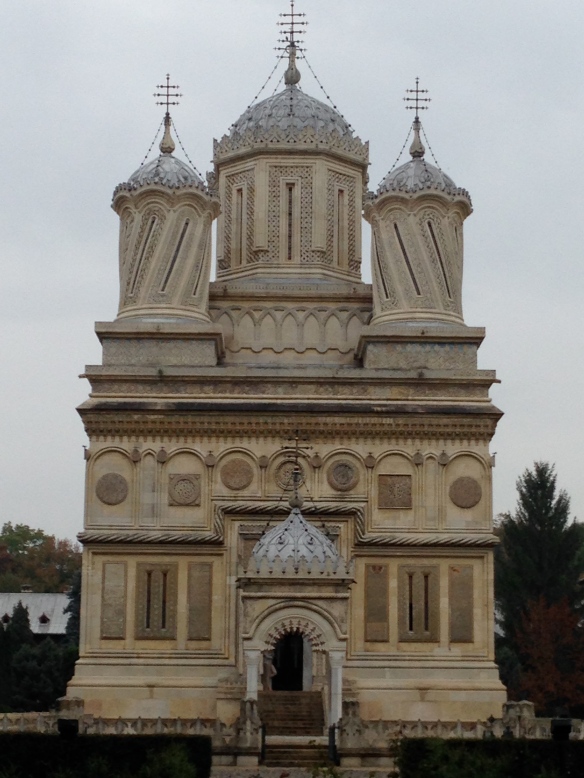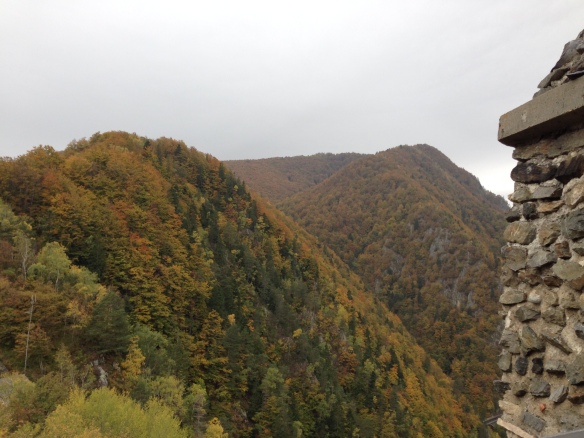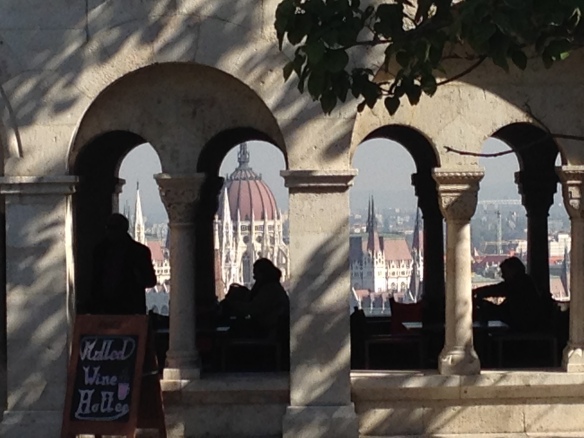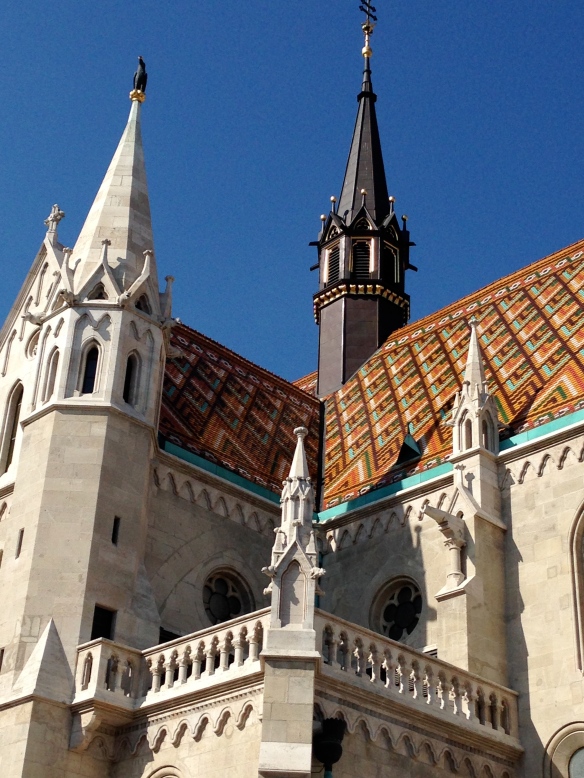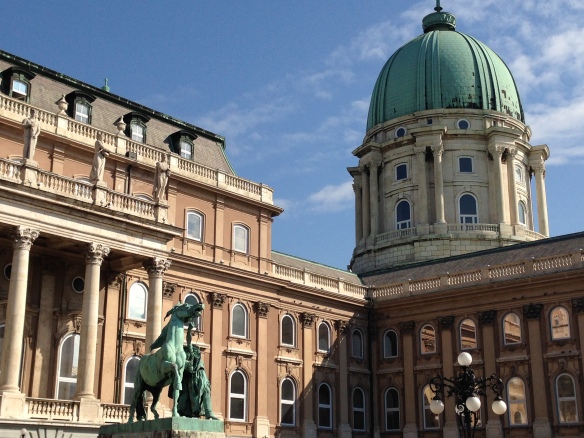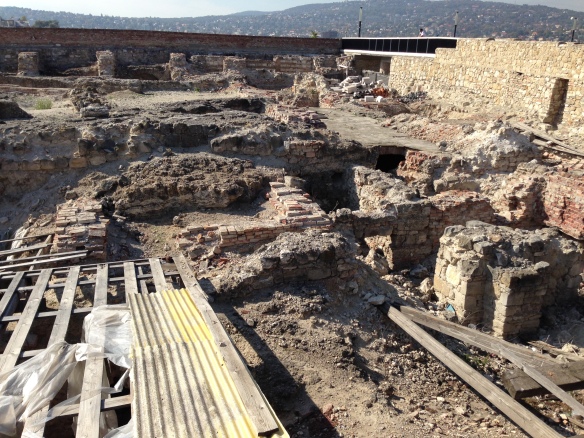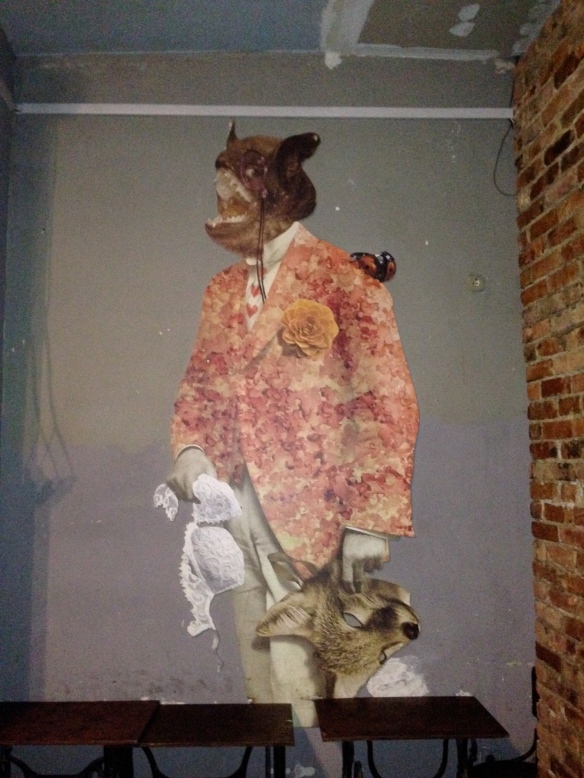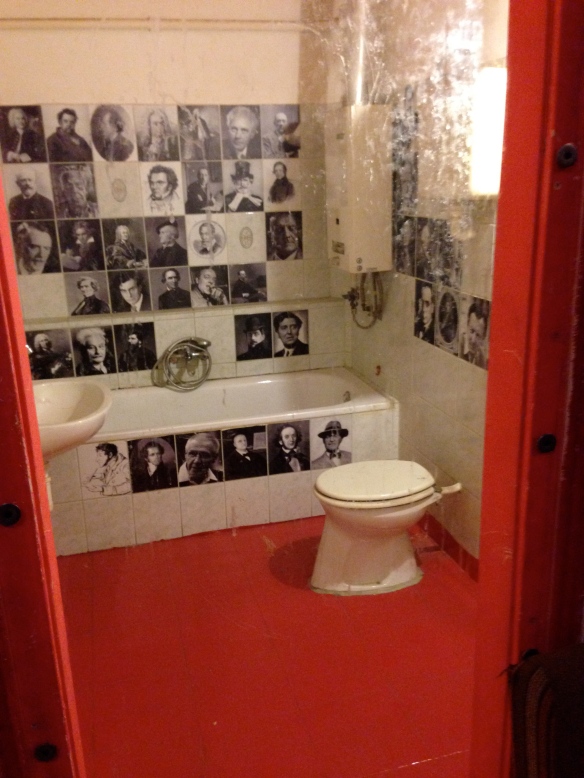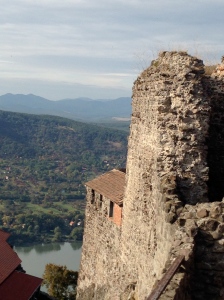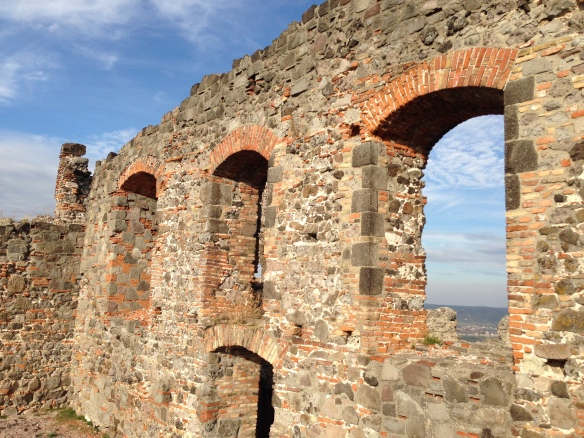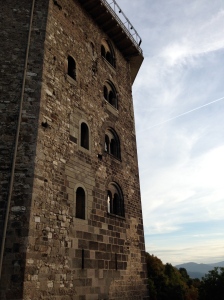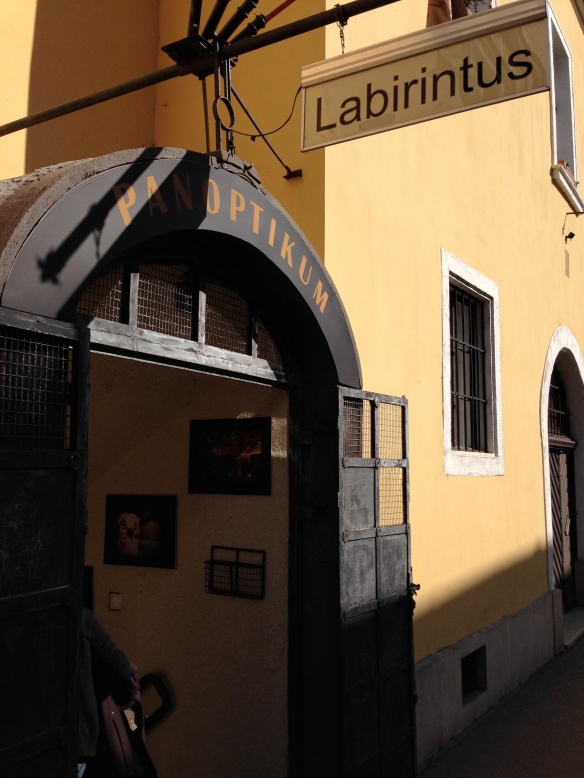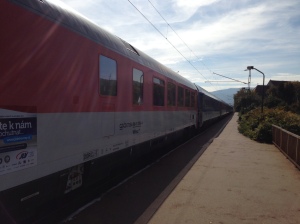 No, the title doesn’t mean what you think it does.
No, the title doesn’t mean what you think it does.
After witnessing first hand the horror that is the mass confusion of the Budapest train system, little did I know that my train experience was about to get worse. Much, much worse. Being the canny, paranoid world travelers that I and one of my two traveling companions aspire to be (my other friend who came along doesn’t count as paranoid, so I am leaving her out of this), we thought ourselves clever when we ordered from Rail Europe nice, comfy sleeper train seats on a night train out of Budapest into Romania.
Tickets in hand, we locate the correct train, wait patiently for the departure time, file on, and pick out a nice sleeper cabin. Well, actually kind of crappy, but I wasn’t inclined to be too picky, hell, I was actually on a night train to Transylvania, which has to be worth some world traveler points, right?
At last, the train grumbles to a start with me carefully following along on GPS to make sure we did, in fact, get on the right train, or at least were going in the right direction. Train Conductor #1 arrives, takes our tickets, looks confused. Turns tickets one way, then another. Finally, he tells us we need to move up three cars, so we grab our packs and move up three cars.
This last part actually deserves a sidebar:
Up until now we’d been in Hungary, and for those of you unfamiliar with the language, Hungarian is kind of a special snowflake in terms of European languages – it isn’t really related to anything, and trust me, it shows. Someone speaks German to me, for example, and I can usually pick out a few words and garner a meaning from it.
Hungarian? Not a chance.
In this case, I actually did understand, but ironically it wasn’t until about an hour later (and hearing a couple of others of the crew speak) that I realized they were speaking Romanian. (I had taken a couple of months or so of Romanian before leaving – not enough to hold a real conversation, but at least enough to stumble through certain basic communications).
So an hour or so later a little light bulb lit up and I realized why I could understand a little of what he was saying.
But back to our story. We move to another car. A little while later, Train Conductor #2 comes along. Rinse and repeat the earlier performance, and we start to wonder if we’re going to even make it to our destination on train or if backpacking on foot is going to come into this. Grabbing our packs, again we move cars, this time to the cut rate seats which are basically one step above metro seats. But at least we’re going to get there, right?
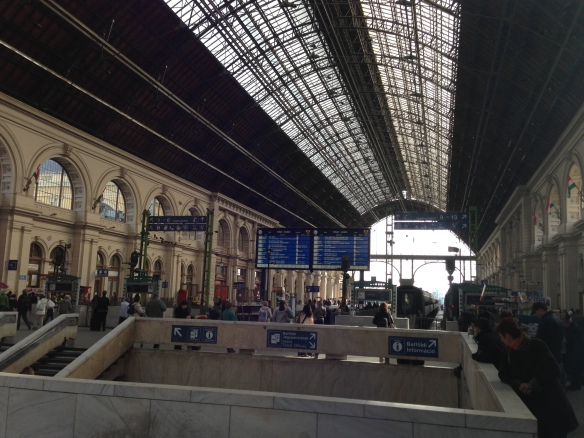
Train Conductor #3 comes along. I honestly felt sorry for her; we realized at that point that the other conductors had simply passed the buck, and when #3 came along, she was left between a rock and a hard place with three Americans whose collective command of Romanian rated disfavorably with an average three year old child from Romania. After a certain amount of agonizing, she just asked us for what I assume to be the equivalent fare for the train car we were in. I still have no idea if she was supposed to do this; I suspect not.
End of the tale? Oh no. See, remember the part about it being an international night train? That meant crew shift changes at a couple of different stations. Friendly Train Conductor #3 got off, leaving us with a receipt, and Train Conductor #4 and company got on. Our collective linguistic capabilities again failed us, and after another fifteen minutes or so #4 rewards our diligence with the universal expression for, “Screw it, I don’t get paid enough for this,” throwing up his hands and letting us stay on the train.
Then came a stop near the border, and Hungarian border police came on board, checked our credentials and stamped our passports. Time passed (the train was agonizingly slow) and my reliable GPS indicated we had crossed the Hungarian-Romanian border. Cautious optimism that was about to get brutally trampled underfoot rose in me. Could it be, perhaps we were going to make it without further incident after all?
Another stop, and this time Romanian border police hopped on board, checked my friends’ credentials, then came to me. The poor guy took my passport, opened it. Looked at the picture. Frowned. Glanced surreptitiously up at me. Looked back at the picture. Called his partner over.
Then followed the most awkward half an hour of my adult life as the Romanian border police tried to determine if I was who I said I was.
Let me back up a couple of years and explain why I was, actually, a little sympathetic to the Romanian border police at this point in time.
A few years back my passport was expired and I was heading up to Canada, so arranged a photo to be taken on the following Monday. That weekend, however, I was hanging out with a couple of female acquaintances (no, nothing like that, trust me) who after one too many drinks managed to convince me to shave my sacred goatee of some seventeen years off. Just to see if I indeed might look better without it (I didn’t).
So, back to the Romanian border in 2013: They’re looking at a passport photo of me with a two-day growth of beard, maybe fifteen pounds heavier and, oh, did I mention I had LASIK/PRK on my eyes about a year ago? Yeah, so the photo also had me in glasses. I really did sympathize with their efforts, especially given the almost tragicomic expressions on the poor guy’s face.
Finally, he asks me for supplementary ID. I hand over my California driver’s license, suddenly glad I had decided to bring it. He glances at the signature, and then gives me a slip of paper to sign my name.
Thank you, Dad, for displacing the traditional physician’s inscrutable scrawl one generation from yourself to me. Because of my absolutely indecipherable, unmistakable signature, the Romanian border police gave a giant sigh of conclusion, handing said paper back to me (it’s still in my wallet) and stamped my passport.
That, then, is the story of how I almost got thrown off a train and detained by the Romanian border police in the middle of the night on the remote edges of Transylvania.
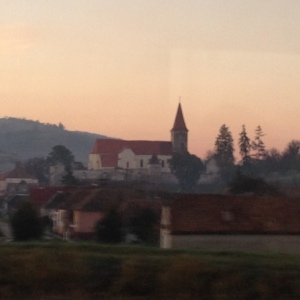 With that, we had only a few more hours to wait in pitch darkness for our train to arrive in Sighișoara (pronounced: sih-gee-sho-ah-ra), birthplace of Vlad Ţepeș, the subject of this entire illustrious expedition. Arrive the train did, about fifteen minutes after dawn crashed over the mountainous terrain of Transylvania, drenching the desolate rural landscape in pinks and reds.
With that, we had only a few more hours to wait in pitch darkness for our train to arrive in Sighișoara (pronounced: sih-gee-sho-ah-ra), birthplace of Vlad Ţepeș, the subject of this entire illustrious expedition. Arrive the train did, about fifteen minutes after dawn crashed over the mountainous terrain of Transylvania, drenching the desolate rural landscape in pinks and reds.
As we inched closer to our first destination in Romania (I did mention this train was agonizingly slow, right?) I started to wonder if, perhaps, I had made a mistake in coming to Sighișoara – the terrain was unforgiving, and the train tracks were bordered by brutally depressing industrial works. Had I, perchance, led our beleaguered party to the Romanian equivalent of Bakersfield, California?
Suddenly, the terrain changed, the softened morning light shafting off of picturesque churches and tiny villages, and I inwardly breathed a sigh of relief. Perhaps my traveling companions would indeed lynch me during (or after) this expedition, but that day would not be today.
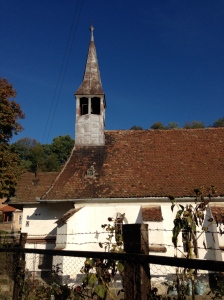 The train rolled into Sighișoara’s tiny train station, and bleary-eyed we hopped off, packs on our backs, to hike through the early morning streets to our hotel. Which I was pretty sure was in walking distance. Mostly sure. (It was). At that hour we couldn’t check in, naturally, but they would hold our packs, so we dropped off said packs and made our way first to the tin-roofed Leper’s Church (a rather mean title, since said lepers weren’t actually allowed inside the church, but were preached to from a platform outside the church) and then to Sighișoara Citadel, a medieval walled guild town built by Saxon Germans supported by Hungary.
The train rolled into Sighișoara’s tiny train station, and bleary-eyed we hopped off, packs on our backs, to hike through the early morning streets to our hotel. Which I was pretty sure was in walking distance. Mostly sure. (It was). At that hour we couldn’t check in, naturally, but they would hold our packs, so we dropped off said packs and made our way first to the tin-roofed Leper’s Church (a rather mean title, since said lepers weren’t actually allowed inside the church, but were preached to from a platform outside the church) and then to Sighișoara Citadel, a medieval walled guild town built by Saxon Germans supported by Hungary.
I am just going to throw it out there: Sighișoara Citadel is awesome. While it may be out of the way, for the average person without my peculiar Vlad Ţepeș obsession (for me, Poenari Castle, which I’ll talk about in a later post when the account reaches Wallachia, was as good), it was easily the best part of the trip in Romania.
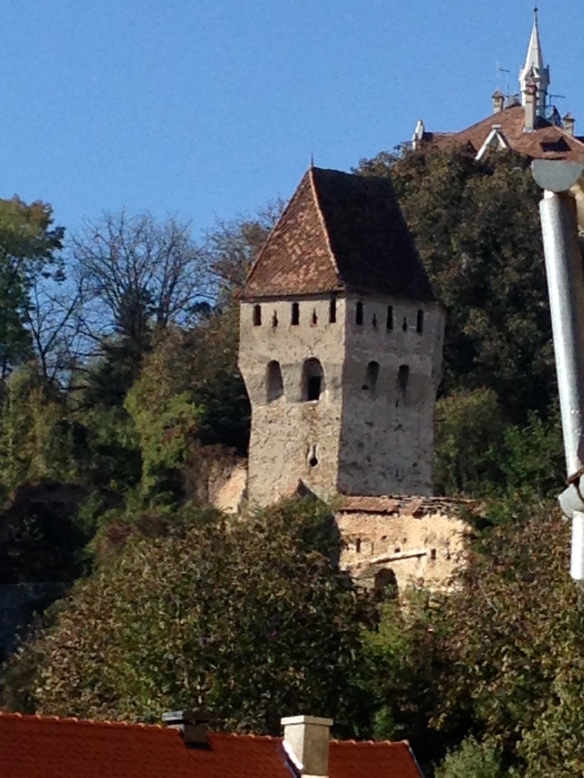
Not only are the fortifications mostly intact, but the town inside is still inhabited with a great collection of outdoor cafes, a cacophony of magpies (which still look funny to me, so used to all-black crows and ravens as I am, but they make some fantastic vocalizations), an old hillside church graveyard and, best of all, the (very significantly rebuilt) house where Vlad Ţepeș was born.
History sidebar time: Despite Vlad Ţepeș’ popular association with Transylvania, he and his family were actually associated with neighboring Wallachia, not Transylvania. So what was Vlad Ţepeș doing being born in a Saxon German guild down in Transylvania, anyways?

In 1431, the year Vlad Ţepeș was born, his father, Vlad Dracul (“The Dragon”, so named to honor his inauguration into the Kingdom of Hungary‘s anti-Ottoman Order of the Dragon) had been appointed Governor of Transylvania by the Hungarians with the goal of stemming territorial encroachments from Vlad Dracul’s brother, Alexandru, current voivode (prince) of Wallachia, to which Vlad Dracul also very much had a claim.
Vlad Ţepeș was born, and a handful of years later his uncle died suddenly, and the Hungarians told Vlad Dracul, “Go,” to which Vlad Dracul without a moment’s delay grabbed every fighting man he could get his hands on and marched into neighboring Wallachia to claim the voivodeship of the principality.
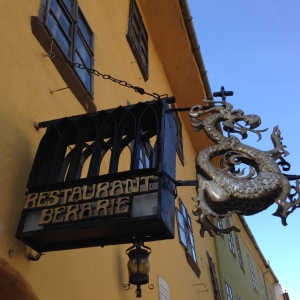 The house that Vlad Ţepeș was born in is a pastel yellow thing sitting next to the neat councilmen’s tower near the old main gates of the fortified town. Naturally, the house Vlad Ţepeș was born in has been transformed…into a restaurant. With a cardboard cutout of Dracula (not Vlad Ţepeș, note) sitting on the walk outside. Featuring a menu full of vampire-themed drinks and food offerings.
The house that Vlad Ţepeș was born in is a pastel yellow thing sitting next to the neat councilmen’s tower near the old main gates of the fortified town. Naturally, the house Vlad Ţepeș was born in has been transformed…into a restaurant. With a cardboard cutout of Dracula (not Vlad Ţepeș, note) sitting on the walk outside. Featuring a menu full of vampire-themed drinks and food offerings.
To say I was dying inside would be an understatement, though I was somewhat buffered in this by the fact that I had heard rumors about this even before getting on the plane way back in San Francisco. My traveling companions were positively gleeful at my discomfort.
So much for historical dignity.
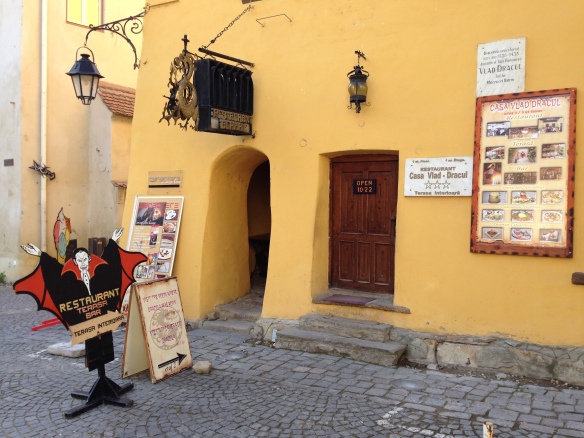
The food was decent, the bar upstairs cute. Then my companions decided they really wanted to pay the 5 Lei to see “the room Vlad Ţepeș was born in”.
Now, keep in mind my earlier comment about the house having been heavily rebuilt since the 15th century, so I was immediately suspicious, but nobody ever called me a quitter, so I steeled myself and prepared for the worst. After a short delay, the restaurant proprietor took us upstairs to a room bedecked in red and black curtains. And an open coffin. With a wax vampire in it.
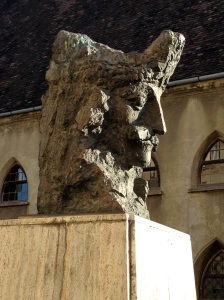 Then (naturally) the “wax” vampire jumped up with a loud, “Boo!”, and I discovered that, yes, indeed, it is always possible for any particular situation to decay further.
Then (naturally) the “wax” vampire jumped up with a loud, “Boo!”, and I discovered that, yes, indeed, it is always possible for any particular situation to decay further.
Sigh.
But, really, Sighișoara was still great. Even if the photos of me with my jaw dropped will probably follow me for the rest of my life.
Next Article: The Werewolf Pack of Poenari
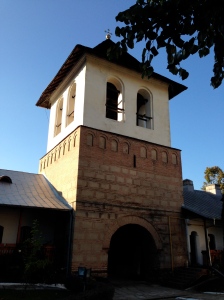 Leaving Transylvania and northern Wallachia we entered into Romania’s lowlands.
Leaving Transylvania and northern Wallachia we entered into Romania’s lowlands.
